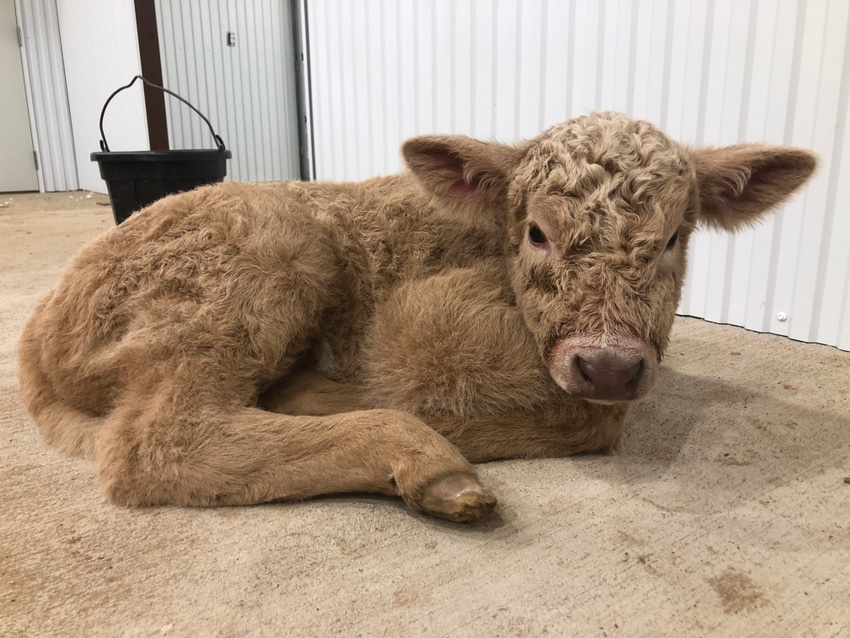Calves are especially vulnerable to recent sub-zero temps.
February 16, 2021

Sub-zero temperatures across the U.S. have come at a particularly bad time for cattle producers, many of whom are welcoming newborn calves to the herd.
“Adult cattle are pretty robust; they have a huge, functioning rumen that really acts as their heating core during the cold winter months,” said A.J. Tarpoff, K-State Research and Extension beef veterinarian. “But the newborn calves are much more vulnerable to hypothermia and cold stress.”
Tarpoff noted that a calf's internal body temperature should be between 101 and 102 degrees Fahrenheit. Trouble begins to arrive when body temperature drops below that.
“The body starts to shunt blood away from the extremities – the skin, lower legs, ears, tail….Their body doesn’t pump as much blood to those areas,” Tarpoff said. “The body is trying to defend itself and the way it maintains its core temperature is to pump warm blood to the brain and other vital organs. They will scavenge their own body, so to speak, to hold that warmer blood in the core of the body.”
Hypothermia begins as the body temperature dips below 100 F. Below 95 F, organs begin cooling, and when temperatures dip into the mid-80s, Tarpoff said the animal may be comatose.
Tarpoff said producers need to take a rectal temperature to know how serious they need to get with helping a calf that has been exposed to the cold. Then, some of the options available include:
Pull the calf inside the truck onto the floorboard heater. It may take up to an hour for the calf to warm up. Once it's warmed up, supplement with colostrum.
If you have nearby access to a barn, bring them into the shop near heating lights and wrap them in warm blankets. Dry the calf before starting the warming process. Be careful once the calf begins moving around that it doesn’t knock over the heating lights and cause a fire.
Put the calf in a hot box. Some commercial boxes are made of plastic, though some producers have made their own. Use lights or warm air fans to promote heating.
Warm water immersion. Bring the calf inside and immerse in a tub of warm water, just a little over 100 degrees F. Do not use hot water, as it can cause heart failure due to cold shock. This is a labor intensive technique since you must continuously add warm water.
Tarpoff added that if initial techniques aren’t working, producers should contact their veterinarian, or take the calf to the veterinarian’s office.
“A veterinarian may be able to use some different techniques, such as a warm saline IV which administers warm fluid to the inside of veins, which heats the core of the animal at a quicker rate,” Tarpoff said.
Treatments aside, Tarpoff added that preventing hypothermia and cold stress is the preferred route to keep calves safe.
“Make sure cows have the energy and protein they need to produce good colostrum and quality milk for their calves,” he said. “On top of that, wind is an absolute killer. Make sure you have provided windbreaks or some kind of barrier to help animals get out of the elements; and provide wheat straw, baled corn stalk or something that provides a barrier to the cold ground.”
You May Also Like



